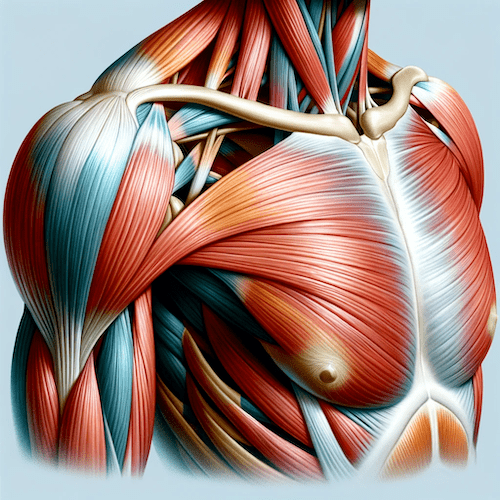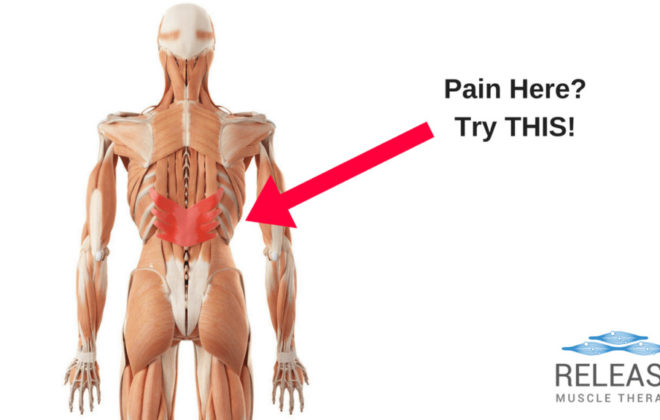Deltoids Stretch – Best Stretches For Tight Delts
Have you ever felt tightness in your shoulders after a long day or intense workout? Tight deltoids can limit your range of motion and lead to discomfort. But, stretching these key shoulder muscles is an easy way to alleviate tension and improve flexibility.
Recent studies highlight the importance of maintaining good shoulder health, with statistics showing that up to 67% of people may experience shoulder troubles at some point in their lives.
Our blog will guide you through the best deltoid stretches to keep your shoulders limber and pain-free. Get ready for relief that’s just a stretch away!

Key Takeaways
- Stretching the deltoids helps improve shoulder flexibility and range of motion, making everyday activities and exercises easier and less painful.
- Regularly performing targeted deltoid stretches like the Overhead Deltoid Stretch, Cross – Body Deltoid Stretch, and Wall Deltoid Stretch can reduce the risk of shoulder injuries from tight muscles.
- A proper warm – up before stretching increases blood flow to the muscles, reducing the chance of strain and allowing for a deeper stretch without injury.
- Holding each stretch for 20 – 30 seconds allows muscle fibers enough time to relax fully, which aids in increasing flexibility and relieving tightness effectively.
- Listening to your body is important when doing stretches; avoid pushing into pain to prevent causing damage to your muscles.
Deltoids Stretching Techniques
Exploring different deltoids stretching techniques can vastly improve your shoulder’s flexibility and health. These targeted stretches are designed to relieve tightness, enhance range of motion, and support the intricate functions of the shoulder joint.
Overhead Deltoid Stretch
The Overhead Deltoid Stretch targets your shoulder muscles effectively. It’s perfect for relieving tightness in the anterior, lateral, and posterior deltoids. Here’s how to do it:

- Stand straight with good posture, feet shoulder-width apart.
- Lift your right arm straight above your head, reaching towards the ceiling.
- Bend your elbow so that your right forearm drops behind your head.
- Place your left hand on top of your right elbow.
- Gently push down on your right elbow with your left hand until you feel a stretch at the back of your shoulder.
- Ensure that you keep your head up and spine straight to avoid any strain on your neck.
- Hold the stretch without pain for 20 – 30 seconds as this helps improve flexibility and mobility in the shoulder joint.
- Release the stretch slowly and lower your right arm down to shoulder height.
- Repeat the process with the left arm to maintain balance in stretching both deltoids.
Cross-Body Deltoid Stretch
Moving on from the overhead stretch, the Cross-Body Deltoid Stretch targets your deltoids differently and helps increase shoulder mobility. This stretch is fantastic for loosening up the posterior deltoid muscles and can be easily done anywhere.

- Stand straight or sit in a comfortable chair if you prefer not to stand. Your feet should be about shoulder-width apart for stability.
- Extend your right arm across your body. Keep it straight but without locking your elbow.
- Use your left hand to gently pull your right arm closer to your chest. You should feel a good stretch across the back of your shoulder.
- Hold this position for 20 – 30 seconds, maintaining even breathing throughout.
- Ensure that you don’t elevate your shoulders as you pull. They should remain relaxed and down, away from your ears.
- Release the stretch slowly and switch arms. Now bring your left arm across your body using the same technique.
- Repeat the stretch on each side two to three times for maximum benefit.
Wall Deltoid Stretch
The Wall Deltoid Stretch helps free up your shoulder joint and reduce tension in the anterior delt and chest. It’s a simple move that can open up the front of your shoulder and reduce tightness.
- Stand facing a wall with your feet shoulder – width apart.
- Extend your right arm and place the palm of your hand flat against the wall at shoulder height.
- Keep your arm straight as you slowly turn your body away from the wall.
- You should feel a stretch across the chest and front of your right shoulder.
- Gently hold this position for 20 to 30 seconds, making sure to breathe normally.
- Carefully return to the starting position and prepare to switch arms.
- Repeat the process with your left arm, ensuring an equal stretch on both sides.
- Perform this stretch two to three times per arm for maximum benefit.
Tips for Effective Deltoid Stretching
Mastering the art of deltoid stretching can significantly enhance your shoulder health and flexibility. Explore these strategies to maximize the benefits from each stretch, ensuring a safer and more effective way to loosen up those tight delts.
Warm up before stretching
Jumping straight into stretching your deltoids without proper preparation can lead to muscle strain or injury. Always begin with a warm-up to get blood flowing through your shoulders and upper arms.
Simple arm circles, swinging your arms gently, or even a brisk walk can raise muscle temperature and make the tissues more pliable for stretching.
Dynamic stretches like the dynamic bear hug stretch help loosen up your tight deltoids before you move on to more static exercises. Dynamic movements effectively prepare the muscles for the range of motion required in deltoid stretches.
Engaging in these light activities helps ensure that when you do start to stretch, you’ll be doing so safely, reducing the risk of shoulder injuries while promoting better flexibility and mobility.
Hold each stretch for 20-30 seconds
After warming up your muscles, it’s time to focus on the duration of each shoulder stretch. Holding a deltoid stretch for an adequate amount of time is crucial in achieving the best results.
Aim to maintain each position for 20-30 seconds. This allows the muscle fibers time to relax fully and extend without causing any harm. Consistency with this timing helps increase flexibility and can relieve tightness effectively.
Gently ease into each deltoid stretch and pay attention to how your body feels during those 20-30 seconds. If you’re stretching your left shoulder, ensure that you’re breathing normally and keeping your right side relaxed as well.
Avoid bouncing or jerking movements while holding the pose; steady pressure will encourage the safe lengthening of muscle tissues within your comfort zone. Remember, proper technique is more important than overexerting yourself—gradually let tension release from across your chest as you stabilize your shoulder joint in a controlled manner.
Listen to your body and don’t push too hard
Paying close attention to your body’s signals during deltoid stretches is crucial. If you experience any sharp pain or discomfort that doesn’t feel right, it’s important to stop immediately.
Stretching should create a gentle pull on your muscles, not sharp pains. Pushing beyond your comfort zone can cause injury and set back your progress, so keep the stretch at a level where you feel tension but no pain.
Ease into each movement and give yourself time to adjust to the stretch. A smooth transition from one pose to another helps prevent overexertion of the deltoids. Remember, improving flexibility takes time; there are no shortcuts when it comes to safely stretching these muscles.
With this in mind, let’s explore how consistent deltoid stretching can benefit you in more ways than just increased mobility.
Improved flexibility and range of motion
Stretching the deltoids improves flexibility in the shoulder joints, making it easier for you to reach, lift, and perform daily tasks without discomfort. By engaging in regular deltoid stretches like pulling an arm across your chest or using a resistance band to target these muscles, you can experience a fuller range of motion.
This means your arms can move more freely and fluidly in all directions.
Enhanced shoulder mobility also stabilizes the shoulder joint and supports rotator cuff muscles, which are essential for upper body strength and injury prevention. With consistent practice, stretching your deltoids is a great way to not only alleviate tightness and pain but also promote better overall shoulder function.
It helps prepare your muscles for activities ranging from sports to simple chores around the house, ensuring that movements are smooth and less restricted by muscle stiffness.
Reduced risk of shoulder injuries
Maintaining flexibility through deltoid stretches not only increases the range of motion but also plays a crucial role in preventing shoulder injuries. By ensuring that your anterior delts, middle deltoid, and posterior deltoid are limber, you help stabilize the shoulder joint which is pivotal for daily activities involving shoulder movements.
Regularly stretching these muscles can prevent common issues like frozen shoulder or other complications that may arise from tightness or overuse.
Engaging in consistent stretching routines helps to keep your shoulders relaxed and less prone to strain during physical activity. This proactive approach reduces stress on ligaments and tendons around the shoulders, decreasing the likelihood of tears or sprains.
As you gently pull across the body towards the opposite shoulder during a stretch, you support better shoulder health by fortifying against potential damage that could come from sudden movements or heavy lifting.
Alleviation of shoulder tension and pain
Focusing on deltoid stretches not only diminishes the chance of injury but also offers immediate relief for shoulder tension and discomfort. Regular stretching encourages blood flow, which eases tight muscles and facilitates a quicker recovery from soreness.
By incorporating movements like bringing the left arm across your body or gently pulling your right arm with your opposite hand, you target the front of the shoulder and posterior deltoid.
These actions help to release excessive muscle tension and enhance overall mobility.
Stretches performed correctly can transform how your shoulders feel daily. If you sit at a desk or perform repetitive tasks that strain these areas, simple yet effective stretches can greatly improve comfort levels.
Stretching helps reset muscle length and teaches them to relax, significantly reducing neck pain associated with stiff shoulders. Consistent practice ensures that shoulder blades glide smoothly, mitigating tension headaches stemming from poor upper body posture.
Conclusion
Stretching your deltoids can unlock the door to better shoulder health and enhanced daily movement. By incorporating simple stretches like the overhead, cross-body, and wall stretch into your routine, you take a proactive step towards preventing injuries.
These exercises are designed for anyone looking to improve their upper body mobility and alleviate discomfort. Remember that consistency is key; regular stretching leads to lasting benefits for both flexibility and strength in the shoulders.
Make deltoid stretches a part of your life to keep those important muscles working smoothly.
Tags In
Sam Visnic
Related Posts
Most Popular Posts
Categories
- Deep Gluteal Pain Syndrome (8)
- Deltoids (2)
- Foam Rolling (2)
- Glutes (9)
- Hamstrings (5)
- Hypnosis for Pain (3)
- Lats (2)
- Levator Scapulae (4)
- Lifestyle (8)
- Massage Therapy (39)
- Mobility (21)
- Movement and Exercise (19)
- Muscles (22)
- Nutrition (2)
- Obliques (1)
- Pain (25)
- Pectorals (3)
- Piriformis (3)
- Plantar Fasciitis (11)
- Psoas (11)
- Quadratus Lumborum (3)
- Quadriceps (2)
- Rhomboids (3)
- Sciatica (1)
- Serratus Anterior (1)
- SI Joint (14)
- Sternocleidomastoid (1)
- Stretching (18)
- Subscapularis (1)
- TMJ (2)
- Trapezius (1)
- Uncategorized (12)










